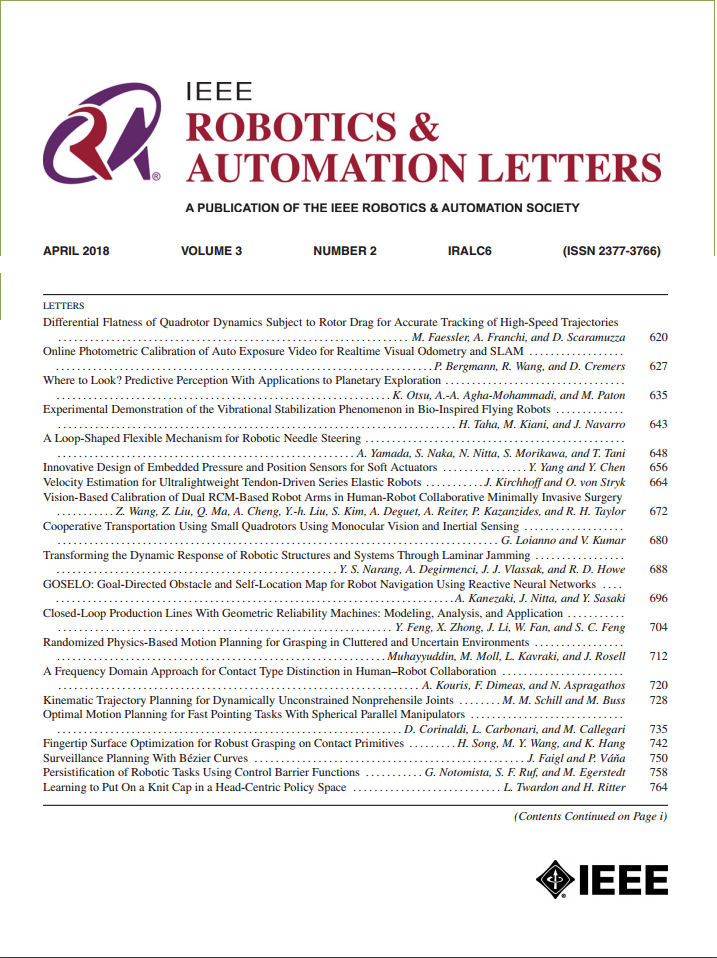SSF-PAN: Semantic Scene Flow-Based Perception for Autonomous Navigation in Traffic Scenarios
IF 5.3
2区 计算机科学
Q2 ROBOTICS
引用次数: 0
Abstract
Vehicle detection and localization in complex traffic scenarios pose significant challenges due to the interference of moving objects. Traditional methods often rely on outlier exclusions or semantic segmentations, which suffer from low computational efficiency and accuracy. The proposed SSF-PAN can achieve the functionalities of LiDAR point cloud based object detection/localization and SLAM (Simultaneous Localization and Mapping) with high computational efficiency and accuracy, enabling map-free navigation frameworks. The novelty of this work is threefold: 1) developing a neural network which can achieve segmentation among static and dynamic objects within the scene flows with different motion features, that is, semantic scene flow (SSF); 2) developing an iterative framework which can further optimize the quality of input scene flows and output segmentation results; 3) developing a scene flow-based navigation platform which can test the performance of the SSF perception system in the simulation environment. The proposed SSF-PAN method is validated using the SUScape-CARLA and the KITTI (Geiger et al., 2013) datasets, as well as on the CARLA simulator. Experimental results demonstrate that the proposed approach outperforms traditional methods in terms of scene flow computation accuracy, moving object detection accuracy, computational efficiency, and autonomous navigation effectiveness.基于语义场景流的交通场景自主导航感知
由于运动物体的干扰,复杂交通场景下的车辆检测和定位面临着巨大的挑战。传统的方法往往依赖于异常值排除或语义分割,计算效率和准确率较低。所提出的SSF-PAN能够以较高的计算效率和精度实现基于LiDAR点云的目标检测/定位和SLAM (Simultaneous localization and Mapping)功能,实现无地图导航框架。本工作的新颖之处在于三个方面:1)开发了一种神经网络,可以在具有不同运动特征的场景流中实现静态和动态对象的分割,即语义场景流(semantic scene flow, SSF);2)开发迭代框架,进一步优化输入场景流和输出分割结果的质量;3)开发基于场景流的导航平台,在仿真环境下测试SSF感知系统的性能。使用susscape -CARLA和KITTI (Geiger et al., 2013)数据集以及CARLA模拟器验证了所提出的SSF-PAN方法。实验结果表明,该方法在场景流计算精度、运动目标检测精度、计算效率和自主导航效果等方面均优于传统方法。
本文章由计算机程序翻译,如有差异,请以英文原文为准。
求助全文
约1分钟内获得全文
求助全文
来源期刊

IEEE Robotics and Automation Letters
Computer Science-Computer Science Applications
CiteScore
9.60
自引率
15.40%
发文量
1428
期刊介绍:
The scope of this journal is to publish peer-reviewed articles that provide a timely and concise account of innovative research ideas and application results, reporting significant theoretical findings and application case studies in areas of robotics and automation.
 求助内容:
求助内容: 应助结果提醒方式:
应助结果提醒方式:


